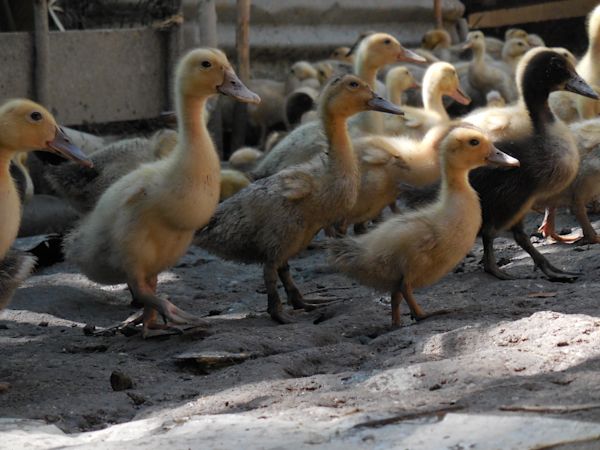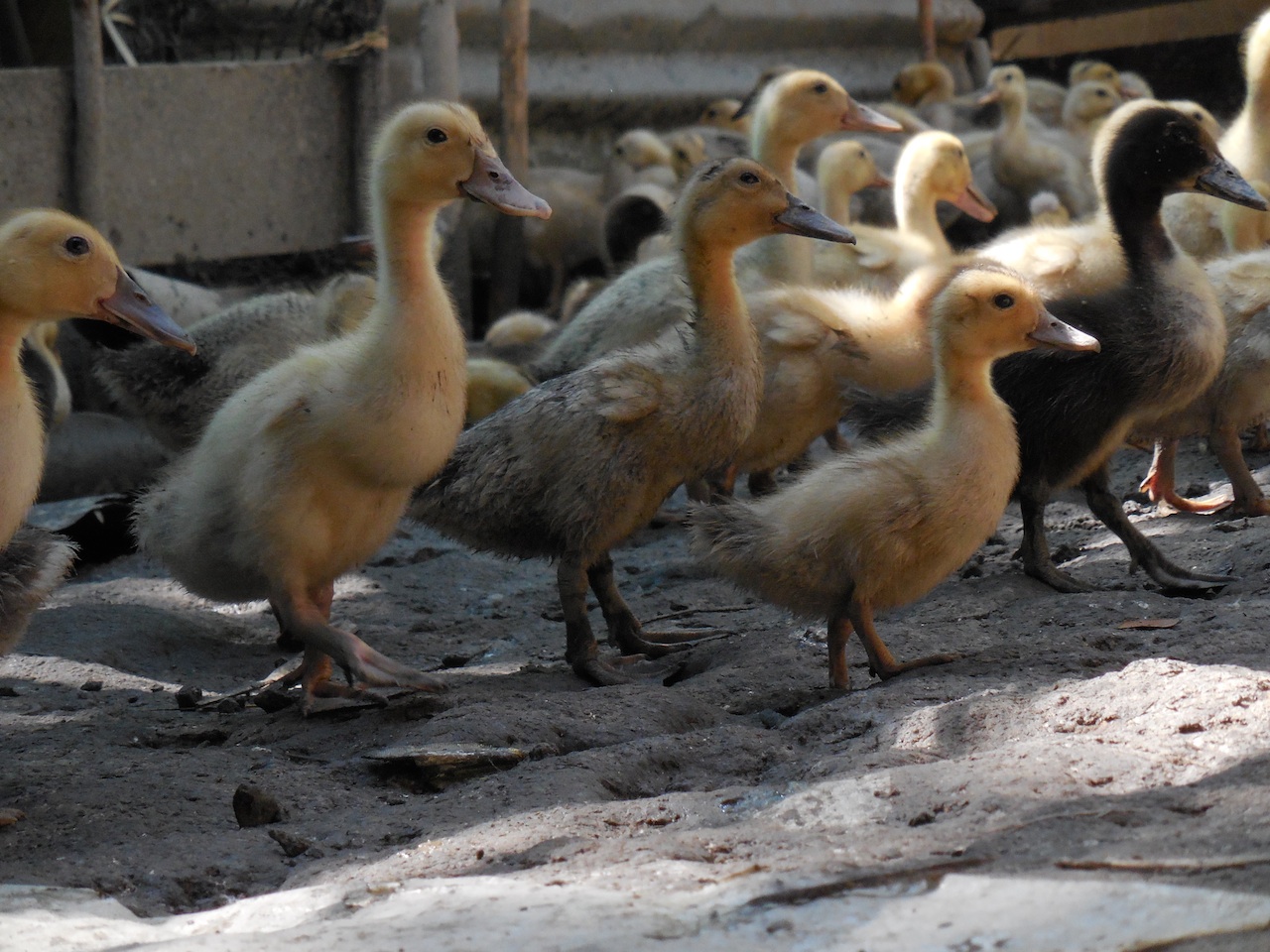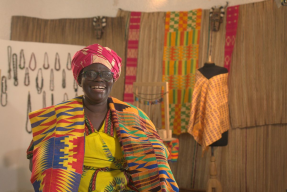
There was no dozing off on the way to Dedaye. As the taxi sped mercilessly down the bumpy road dodging bikes, motorcycles, ox-drawn carts, and the occasional village parade, I thought to myself, “Are we supposed to be going this fast?” The thrilling taxi ride was not the only mode of transportation needed that day. We also had to travel by motorcycle and boat to reach each village. This was the first of many borrower verification trips with Kiva’s Myanmar partner, Proximity Designs. First up was Hmaw Bi Village in Dedaye.
When we arrived, I clumsily hopped out of the small boat, attempting not to fall into the muddy river water. Proximity’s loan officers led us to the meeting place, which was located in a small raised hut about a quarter of a mile down from where we docked the boat. The village is situated in between two green fields, its streets lined with trees and modest but charming huts.
 Village road
Village road
The leaders of the village’s community based organization (CBO) were waiting for us with traditional Burmese snacks of tea leaf salad (lah-peh) and green tea. We then started the borrower verification process, which is an audit of sorts, to make sure that Kiva’s funds are being used for catalytic (high developmental impact) loans. The “featured borrower” for Hmaw Bi Village is Daw Mya.
 Daw Mya in front of her duck coop
Daw Mya in front of her duck coop
During the interview, Daw Mya opened up to us about how cyclone Nargis affected her village, family, and livelihood. In 2008, cyclone Nargis damaged a lot of areas in Myanmar’s delta region where Dedaye is located. It took Daw Mya three years to rebuild her house. The money she saved to send her daughter to school in Yangon had to be rerouted towards subsidizing for the losses in income due to the cylcone. The interview turned from challenges faced to progress made as we talked about how the pilot duck loan program had helped the group. The duck loan program is a regional catalytic loan product first implemented by Proximity and funded by Kiva lenders in 2014.
Through Proximity’s duck loan program, she was able to purchase 25 more ducks as well as nutrient rich duck food. The loan allowed her and her family to maintain their diversification of farming assets year round. When the temperatures heat up during the summer, ducks tend to have a higher mortality rate. The additional income from the loan gave them a buffer; it meant that they did not have to sell off other farming assets (such as pigs or chickens) to recoop the loss of income due to decreased duck egg production. Also, the nutrient rich food helps ducks lay more eggs overall. With more ducks to work with, as well as higher quality duck feed, she will be able to maintain some consistency of income during the hot summer months.
 Daw Mya's ducks
Daw Mya's ducks
As we wound down the borrower verification meeting, there was a twinkle in Daw Mya’s eye. Daw Mya tells us that this is the first time she’s had some room to breathe in the past seven years. She and her husband work hard to provide for their three children by planting summer crops at a friend’s farm, as well as running the duck business. Now that the duck loan provides for more reliable income year round, they can start to entertain some sort of saving plan for her children’s education again.
At the end of the day, my brain was buzzing with stories of the borrowers that we met in Dedaye. It was amazing to witness first hand how Kiva’s lenders were able to make a difference. As we rushed back to Yangon on the equally wild taxi ride back, I couldn't help thinking about Daw Mya and how she is slowly but surely getting her ducks back in a row.
 Ducklings!
Ducklings!














